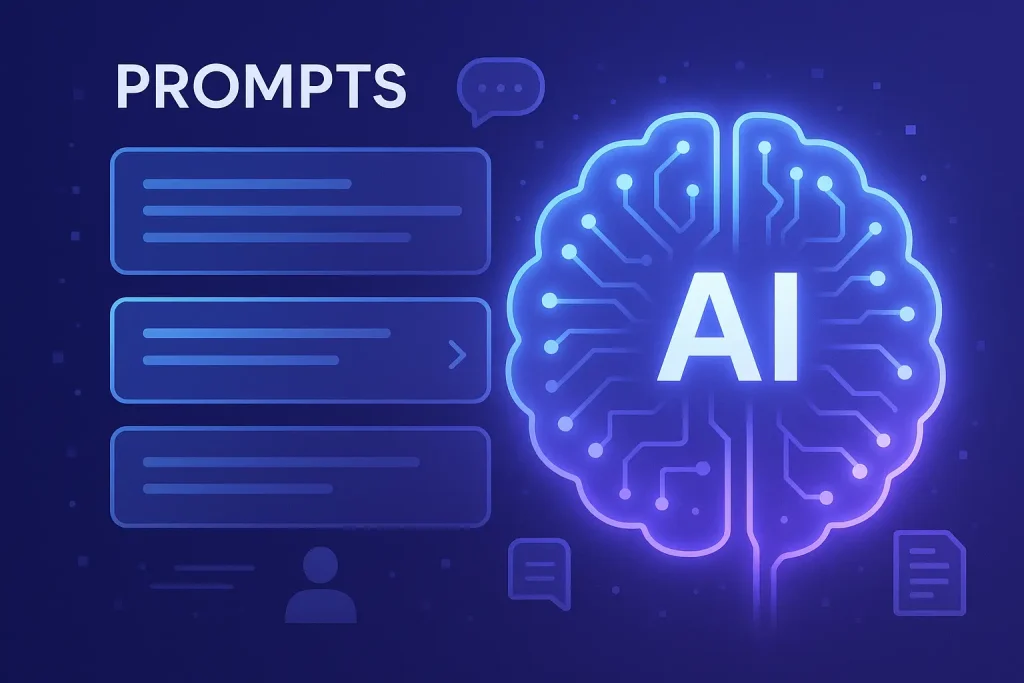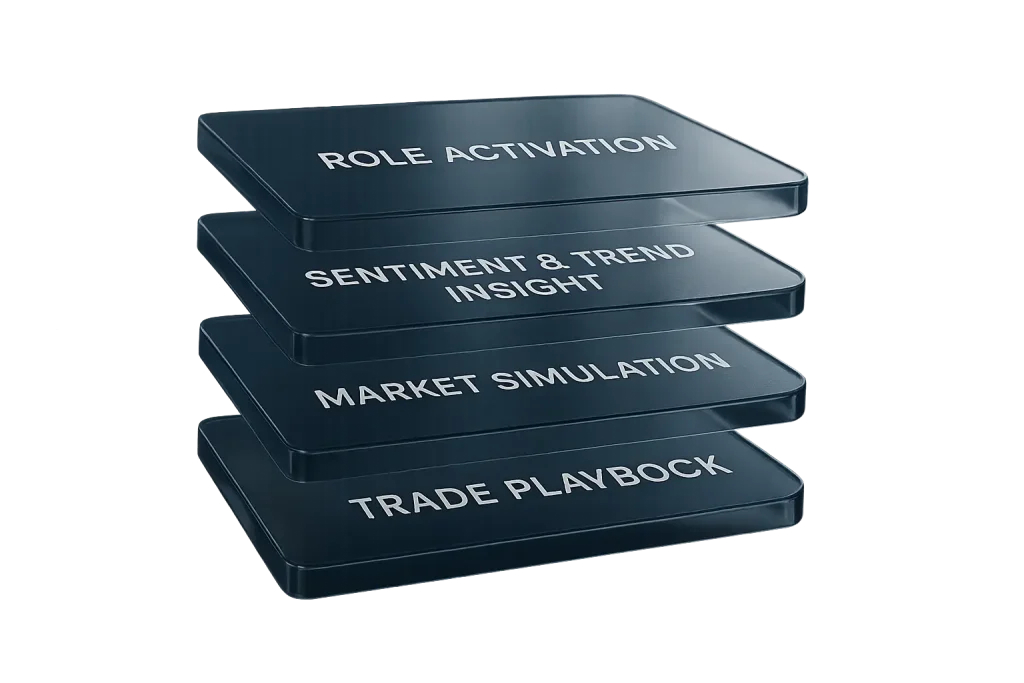Ready to take your trading to the next level with AI? The future of stock trading isn’t about guessing or gut feelings — it’s about harnessing the power of artificial intelligence (AI) and advanced prompt frameworks that deliver institutional-level market analysis right to your fingertips. Whether you trade stocks or crypto, you don’t need a finance degree or coding skills to use these powerful AI trading tools. In this post, we’ll explore what prompts are and how they’re used in ChatGPT, examine their limitations, and show how structured prompt frameworks can improve AI systems effectiveness for trading.
What Are Prompts?

An AI prompt is a specific instruction given to an artificial intelligence model to generate a focused response. Simply asking questions often isn’t enough to get meaningful or reliable results. That’s where prompt frameworks come in — carefully designed structures that guide the AI to provide deeper, more actionable insights.
These frameworks organize the AI’s process by breaking down complex tasks into logical steps, such as analyzing sentiment, identifying trends, running scenario simulations, and generating clear recommendations or plans. By using structured prompts, AI tools like ChatGPT can operate as effective assistants, helping users across various fields make better-informed decisions based on thorough analysis.
Why Basic AI Queries Fall Short

These AI-powered trading tools give retail traders a competitive edge previously reserved for hedge funds and professional desks—all accessible through a simple ChatGPT conversation. However, basic ChatGPT queries often produce generic answers that lack depth or actionable advice. While the AI can generate plausible-sounding responses, these are frequently surface-level and fail to address the complexities of real-world trading.
Critical elements such as risk management, clear trade strategies, and disciplined decision-making are often missing. Without a structured approach, AI outputs can be overly optimistic or ambiguous, leaving traders vulnerable to impulsive decisions based on incomplete or misleading information.
This lack of specificity can encourage excessive risk-taking, lead traders to chase short-term market hype, and cause them to fall victim to emotional biases such as fear of missing out (FOMO). Consequently, relying solely on unstructured AI responses increases the likelihood of poor trading outcomes and amplified losses.
Why Use AI Trading Prompt Frameworks?

To mitigate the tendency of AI systems, including ChatGPT, to produce generic or overly bullish responses that may encourage traders to take excessive risks, prompt frameworks play a crucial role. They prevent AI drift and vague outputs by layering specific, controlled instructions that guide the AI toward risk-aware trading strategies aligned with each trader’s profile. This approach helps traders avoid chasing FOMO and becoming trapped in losing positions.
Advanced AI trading prompt frameworks incorporate strategic approaches such as scaled-in entries and the use of key psychological price levels as reference points to maintain exposure without overcommitting. They also include risk-sensitive buy strategies that monitor for bull traps, stop loss hunting, liquidity sweeps, order flow imbalances, and churn and burn tactics —common methods used by institutions to trap retail traders into prolonged losing positions.
Additionally, these frameworks support dynamic position sizing that adjusts trade sizes based on current volatility and portfolio risk limits, incorporate risk-reward ratio calculations to help assess trade quality before entry, and define clear trade exit triggers based on trend changes, support breaks, or shifts in sentiment.
The frameworks adapt strategies to changing market volatility, reducing exposure during high-risk periods. They also incorporate emotional bias checks to flag common psychological pitfalls such as overtrading or revenge trading, and recognize different market regimes—trending, ranging, or volatile—to guide appropriate tactical adjustments.
At The Richo Edge, we rigorously stress-test all our prompt frameworks to deliver calm, clear, and risk-managed trade playbooks designed to keep you strategically positioned and protected.
How Next-Gen AI Prompt Frameworks Work: Layered Trading Analysis Explained

The key to these frameworks is a layered prompt structure that begins with role activation, setting the AI into an institutional equities trading persona. It then mirrors professional analysis by assessing sentiment—analyzing news, social media, and market data to gauge overall market mood. Next, trend detection evaluates price momentum and volume to determine the strength or weakness of an asset.
Then, market simulations model how institutional traders might reposition based on the trader’s specific goals, risk tolerance, and patience.
Finally, the framework generates actionable trade playbooks with clear entry points, stop-loss zones, and position sizing tailored to the trader’s profile.
This structured approach is the foundation of what we call the RISI Framework™ — a proprietary system designed by The Richo Edge to bring institutional-grade equities analysis to retail traders. RISI stands for:
- Role: Activate persona — setting the AI into an expert, professional trading or analytical mindset, primed to deliver focused and disciplined market analysis.
- Insight: Analyze market sentiment and trend — the foundational context for all trading decisions.
- Strategy: Simulate institutional repositioning based on the trader’s unique profile, goals, and risk tolerance.
- Impact: Deliver clear, actionable trade playbooks — concise one-paragraph outputs that drive confident, risk-managed decision-making.
The RISI Framework™ transforms ChatGPT from a general assistant into a disciplined, professional trading partner, providing precise, risk-aware guidance tailored to your trading style and objectives.
The Future of AI Trading: What’s Next for Prompt Frameworks?
AI trading is rapidly advancing with innovations such as real-time data integration for up-to-the-minute market insights, multi-asset analysis covering stocks, cryptocurrencies, and currencies, and personalized AI-generated trade playbooks tailored to individual portfolios. Collaborative prompt sharing among traders is accelerating the development of trading edges, while advanced scenario modeling enables stress-testing of strategies under extreme market conditions.
Although these AI systems are still in their infancy and represent simplified versions of institutional models, they are evolving rapidly, enabling retail traders to compete with institutional desks in speed, accuracy, and insight. However, it’s important to remember that these AI systems were not originally designed specifically for trading. Though, AI trading frameworks are creatively adapting these systems to become more trade-focused and precise.
In conclusion, mastering next-generation AI prompt frameworks transforms ChatGPT from a general chatbot into a professional-grade trading partner. These tools deliver institutional-level market analysis, enhanced risk management, and actionable trade plans accessible to traders of all experience levels. Start exploring AI trading prompts today to unlock your full trading potential.